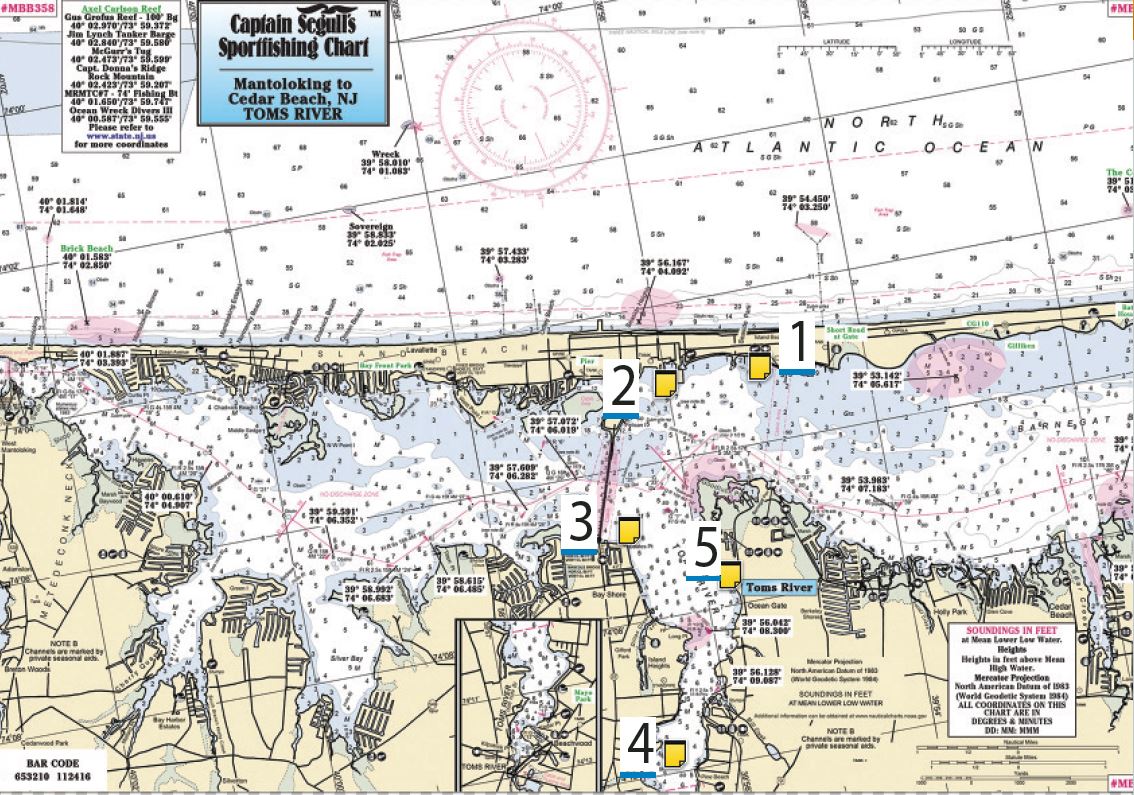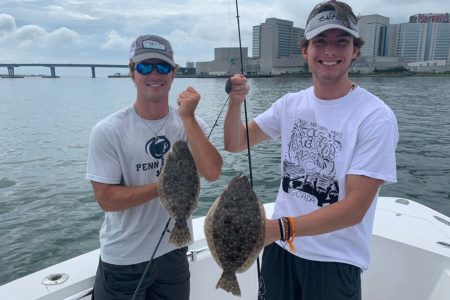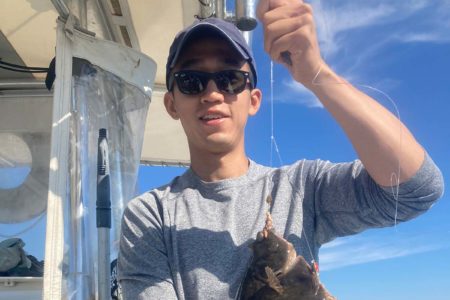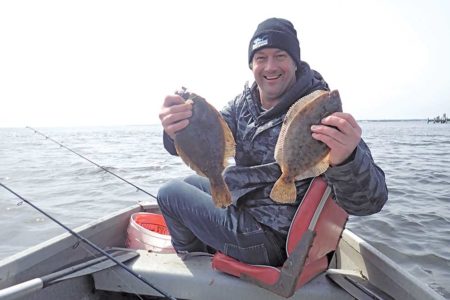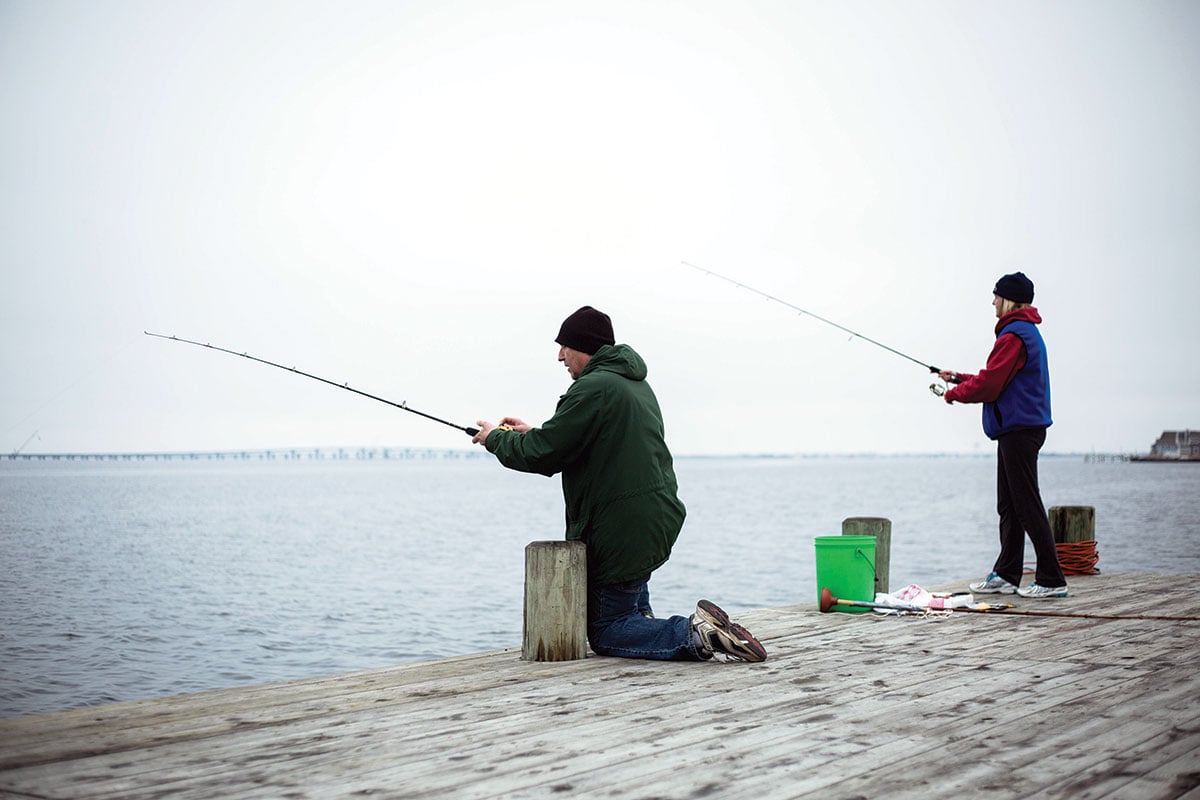
Despite a two fish at 12-inch limit, the opening of winter flounder is as much about tradition as filling a cooler.
Come on, let’s go down the shore,” my wife and fishing partner said, “I need a change of scenery.” After a week of dreary weather, the day offered blue skies, sunshine and a southwest breeze, perfect conditions for our go-to winter flounder spot, the Second Pier.
That’s where I caught my first fish, the lowly blowfish, when I was a kid, feeling the electricity of that first bite. From that point on, I was hooked. It’s where my kids also caught their first fish too, although they upgraded to snapper blues.
So it was only right that we began our season where it all started, all those years ago.
This particular pier offers a great set-up for consistent winter flounder action, and there are loads of such structures peppered throughout the Jersey Shore. Bulkheads, piers, even shore and marsh banks are all good starting points to blow the stink of winter off and bathe in the luxury of some much-needed sunshine and fresh, salt air.
I try to look for a muddy bottom, since it holds the benthic marine life flounder feed on, plus its dark color attracts the sun’s warmth. Water anywhere from 4 to 12 feet has been the most productive for me, and time of day is more important than tide, but that’s because I fish mostly backwater bays where tidal movement is at a minimum.
If you find a spot where tides run strong, definitely fish the top water to ebb tide, as the warmer inshore waters will be more amenable to flounder activity than the outside ocean waters. Look for water temps in the 45- to 55-degree range.
Bluebird Fishing
Winter flounder fishing lets you hit the snooze alarm a couple of times and drink a leisurely cup of coffee while the springtime sun does its job of warming the bay up for the day. A 10 o’clock to 2 or 3 in the afternoon session will make for a full, pleasurable outing and day. I prefer to be in the lee of the wind, not only for warmth, but also for more accurate control of my bait and tackle.
Since my Second Pier hotspot is on the south shore of Toms River, winds out of the south quadrant work best, but I have a couple of back-up spots when it’s clear, cold and blowing northwest. If that happens in my core fishing area, I’ll swing over to Island Heights, Gilford Park or the Bayshore section of Toms River township for more tranquil waters. Back-up spots are always a good idea.
Fishing for winter flatties from the shore can be as simple or complicated as you want it to be, but success lies somewhere in between. The same freshwater or light tackle bay outfits you use in the sultry days of summer work just fine for winter flounder. No real need for dedicated winter flounder outfits. I favor a 6-1/2- or 7-foot trigger style, “popping” rod with a baitcasting reel, or the same length spinning rod matched to a 6- to 10-pound class spinner.
While monofilament line has caught a yeoman’s share of flounder over the decades, you can’t deny the sensitivity and effectiveness of braided line. Since winter flounder aren’t exactly known for their sustained, blistering runs, a top shot of your favorite braid anywhere from 6-pound test on up over a backing of mono is the way to go. As little as 20 yards and certainly no more than 50 yards of braid is all you need.
Uncommon Scents
What you do need is a chum pot, chum, and then some more chum. I use two, one on either end of my fishing spot. You can’t go wrong with the clam chum logs most bait & tackle shops sell, and you can always augment with mussels, corn, rice, cat food and other concoctions, but I’ve found motion to be more important than a potpourri of chum. Lift up and shake the pots, so you’re not only dispersing the clam, but you’re also stirring up the bottom. My regular household plumber’s helper, duct-taped on a bamboo pole, does double duty as a quick, flounder pounder to ring the dinner bell for any flounder in the immediate area.
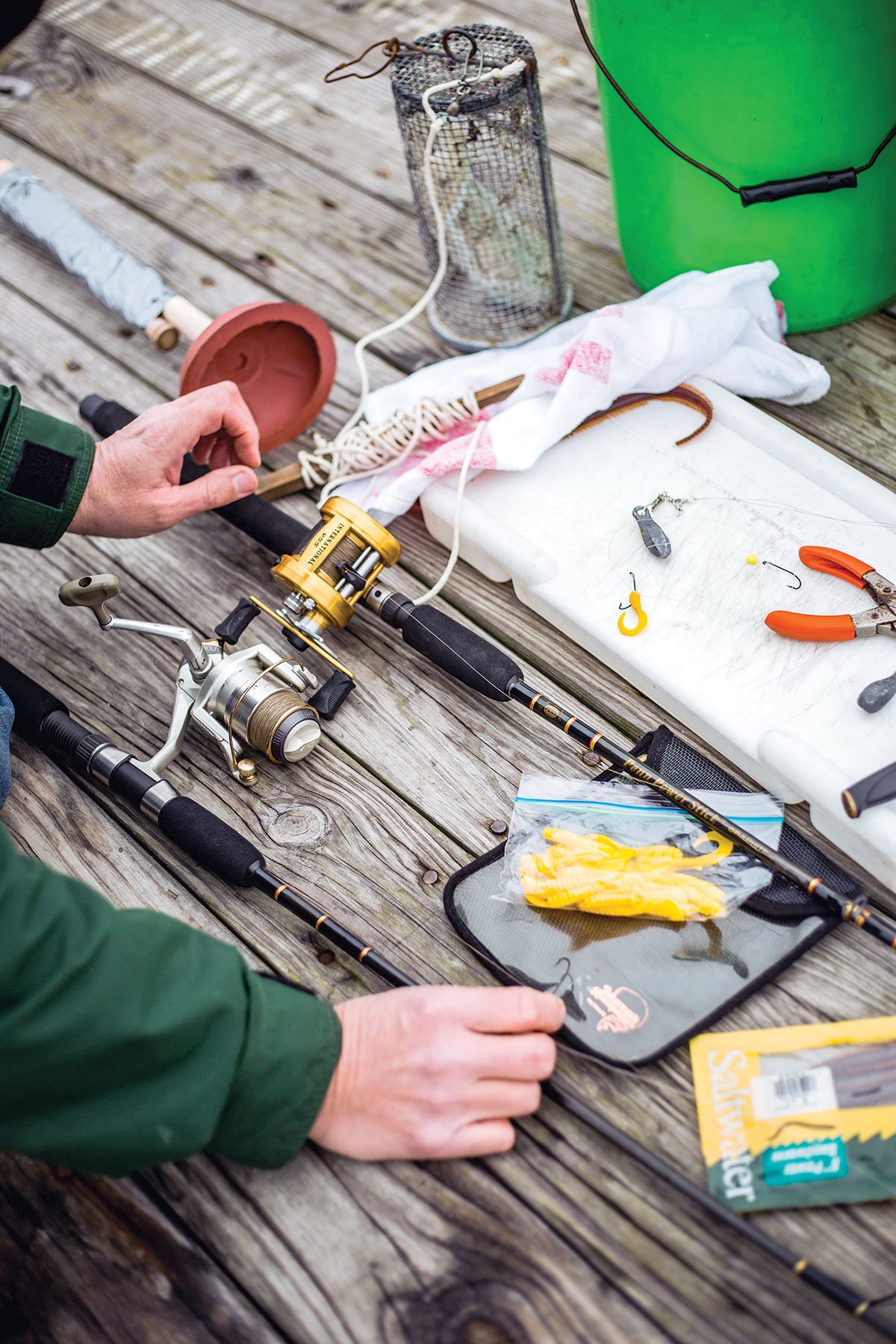
Likewise, terminal tackle ranges from old school, long shank size 9 or 10 Chestertown hooks to size 8 or 9 Owner or Gamakatsu type hooks, with or without adornments of your choice. Winter flounder aficionados experiment with beads and Twister-type tails, but everyone seems to agree on the color: yellow. So do the flounder – they just like yellow over all other colors. A three-way rig and bank sinkers 1 to 3 ounces gets you down to the winter flattie feeding zone.
Natural baits like bloodworms – the king of winter flounder baits – and then sandworms, clam strips and mussels, if you can get them, are standard, proven offerings. Man-made equivalents, like Gulp! bloodworms and Fishbites also have their followers, and you can’t beat their convenience. Sometimes I slide a 1-inch piece of Gulp! bloodworm up the shank of the hook, then top it off with a 1-inch piece of real bloodworm or sandworm, just to cover both bases. It’s fun to experiment!
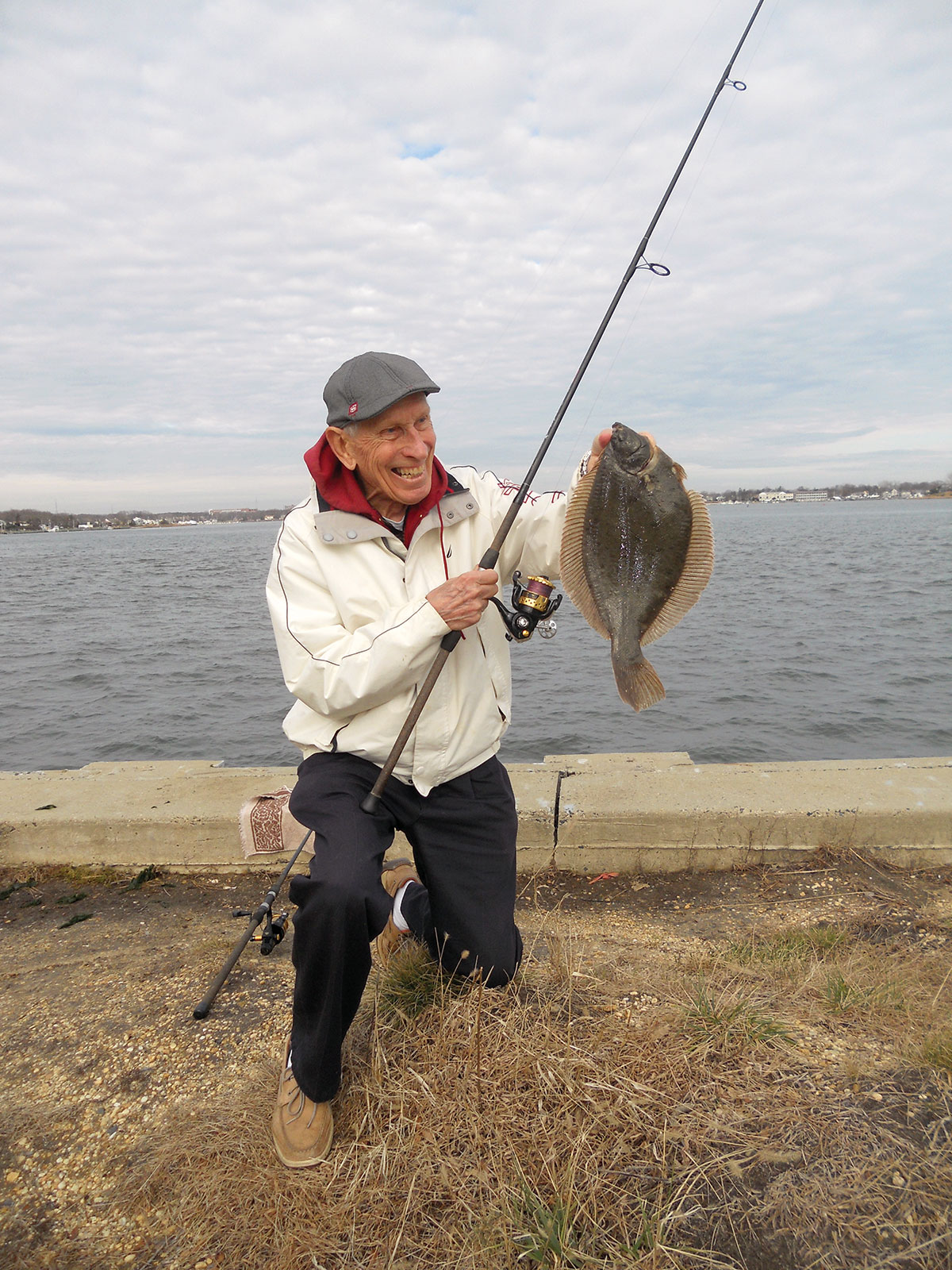
And then there’s the dead-stick versus the hopping philosophy of your bait presentation. I cover both by using at least two rods, one relatively stationary, like a “control” in a lab experiment. With my other rig, I hop my sinker one or three times, every half-minute or so, envisioning my rigs creating an irresistible series of muddy puffs that surely bring the flounder a-calling.
Strategizing, experimenting, trying to tweak the smallest detail on a quarry no bigger than a couple of pounds surely competes with other seemingly more important things to do in our busy lives. But winter flounder fishing offers so much: a time to get away from the easy chair and woodstove, and maybe a few filets for dinner. It’s a chance to revel in the growing sunshine of a dawning fishing season and remembering how good life is when you’re just out fishing.
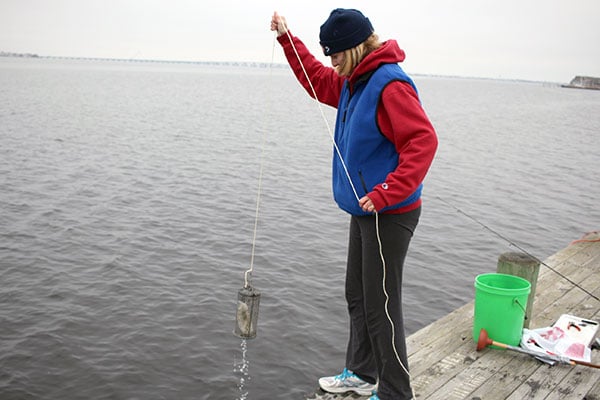
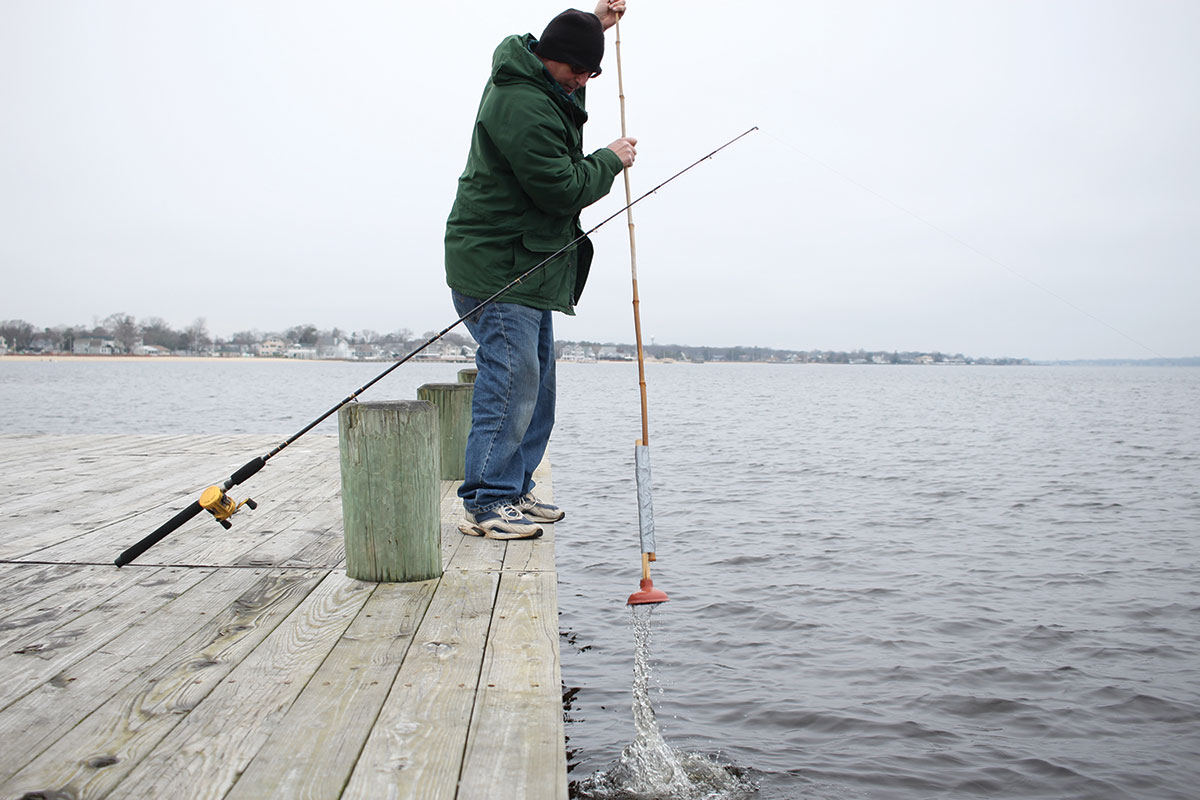
| 5 SHORE BETS FOR FLOUNDER ACTION
1 Seaside Park Municipal Pier 2 The Dock at Dock Outfitters 3 At the foot of Mathis (Route 37) Bridge in Toms River 4 Ocean Gate piers and bulkheads 5 Island Heights, bulkheads Sportfishing Chart MBB358, Mantoloking to Cedar Beach, NJ TOMS RIVER is available through Captain Segull’s charts, online at www.captainsegullcharts.com.
|
|
RULES & REGS: SEASON SPECIFICS New Jersey’s winter flounder season runs from March 1 through December 31 with a two fish bag limit and 12-inch minimum size. New York has the same two fish and 12-inch size limit, however the season opens on April 1 and shuts down on May 30. While winter flounder were periodically targeted in South Jersey years ago behind Brigantine and Ocean City, it’s rare to find these fish much below our Central Jersey region much these days. Jim Hutchinson |

